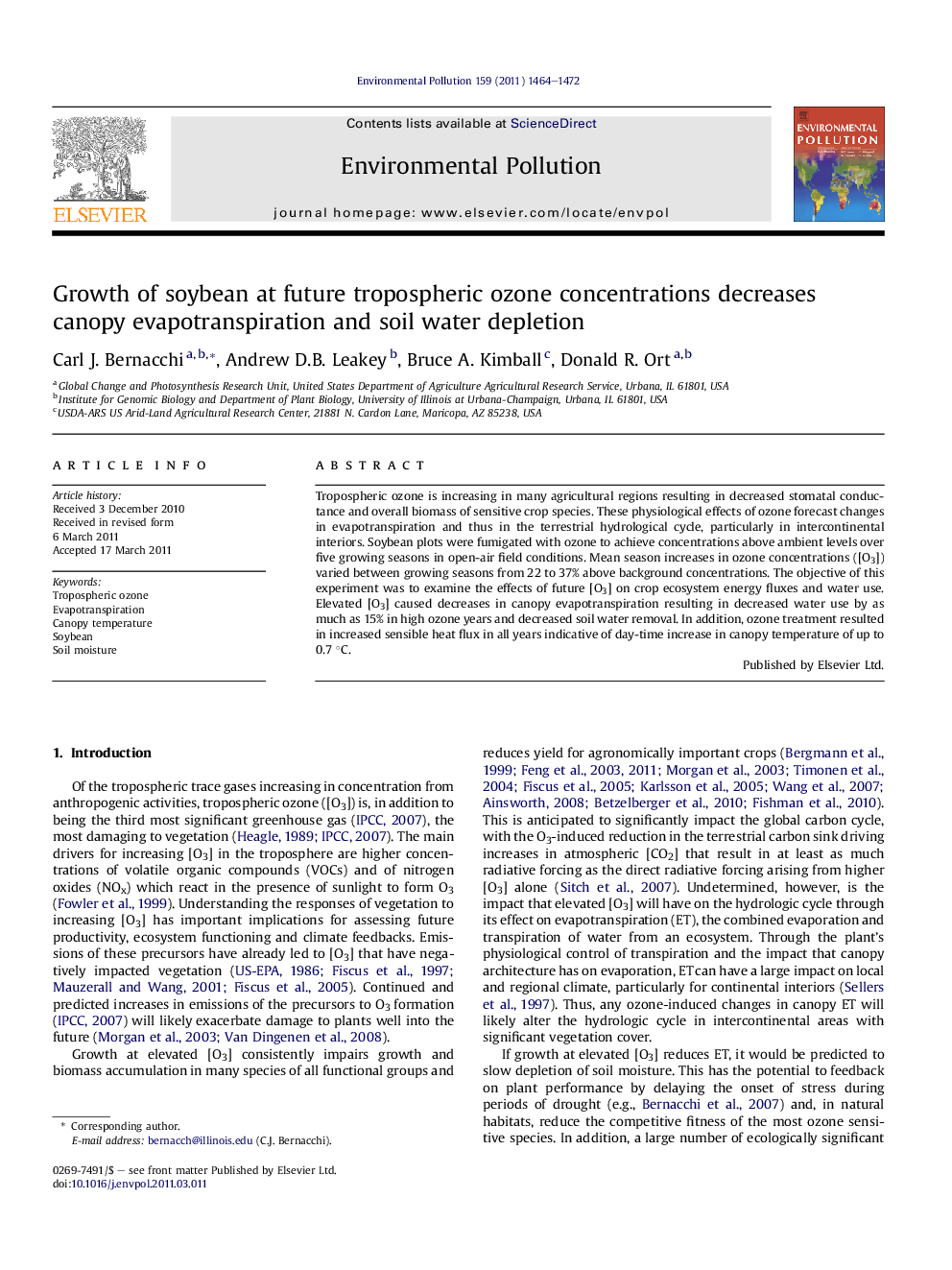| Article ID | Journal | Published Year | Pages | File Type |
|---|---|---|---|---|
| 4425492 | Environmental Pollution | 2011 | 9 Pages |
Tropospheric ozone is increasing in many agricultural regions resulting in decreased stomatal conductance and overall biomass of sensitive crop species. These physiological effects of ozone forecast changes in evapotranspiration and thus in the terrestrial hydrological cycle, particularly in intercontinental interiors. Soybean plots were fumigated with ozone to achieve concentrations above ambient levels over five growing seasons in open-air field conditions. Mean season increases in ozone concentrations ([O3]) varied between growing seasons from 22 to 37% above background concentrations. The objective of this experiment was to examine the effects of future [O3] on crop ecosystem energy fluxes and water use. Elevated [O3] caused decreases in canopy evapotranspiration resulting in decreased water use by as much as 15% in high ozone years and decreased soil water removal. In addition, ozone treatment resulted in increased sensible heat flux in all years indicative of day-time increase in canopy temperature of up to 0.7 °C.
► Globally, tropospheric ozone is currently and will likely continue to increase into the future. ► We examine the impact of elevated ozone on water use by soybean at the SoyFACE research facility. ► High ozone grown soybean had reduced rates of evapotranspiration and higher soil moisture. ► Increases in ozone have the potential to impact the hydrologic cycle where these crops are grown.
